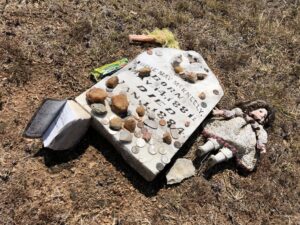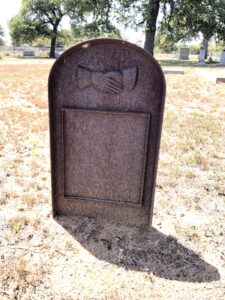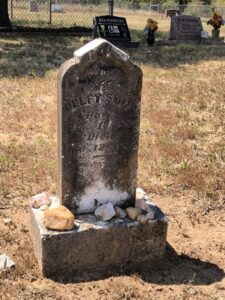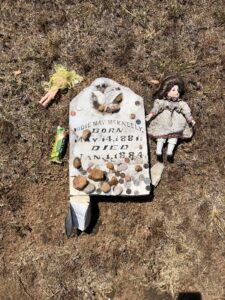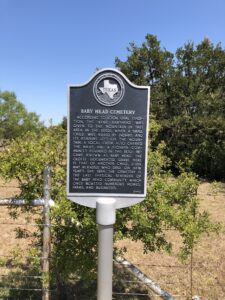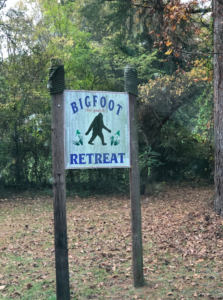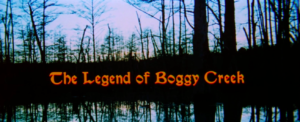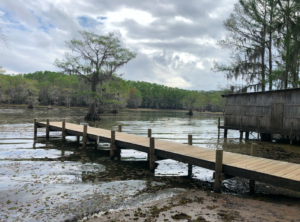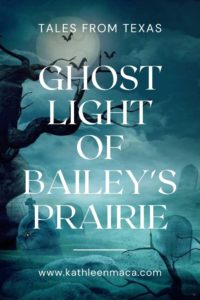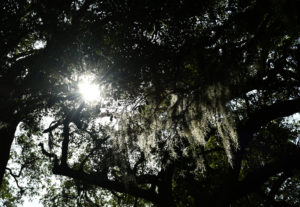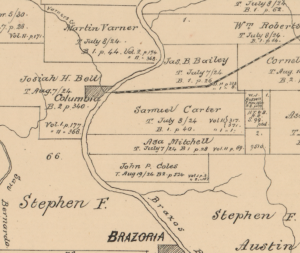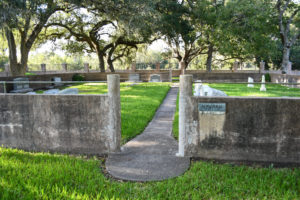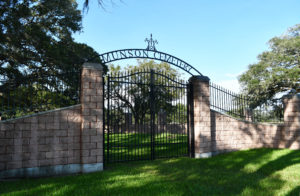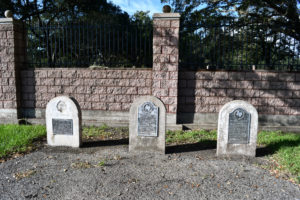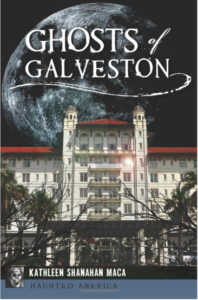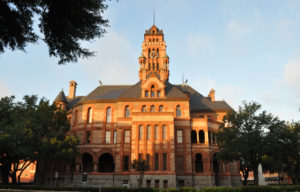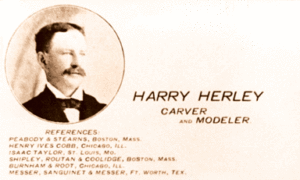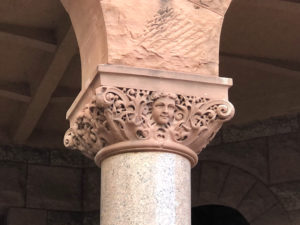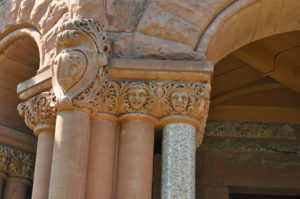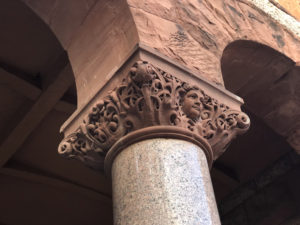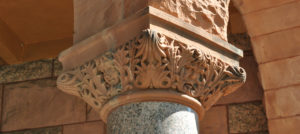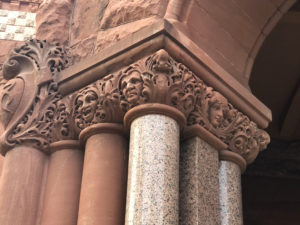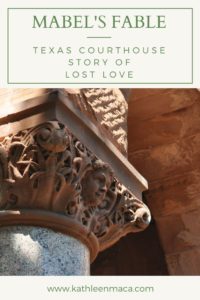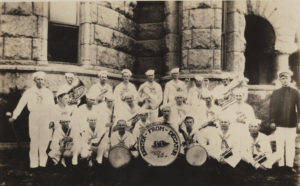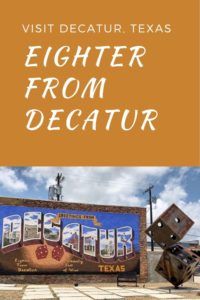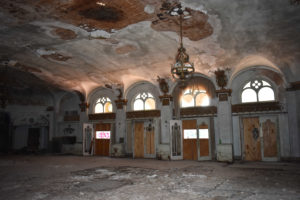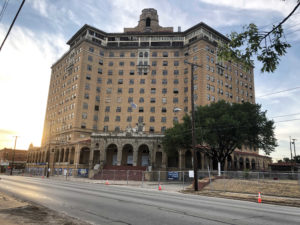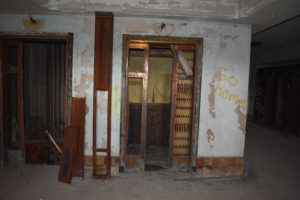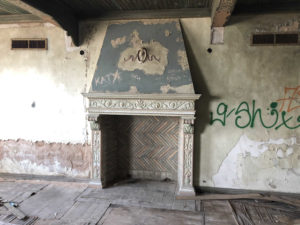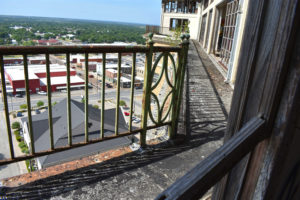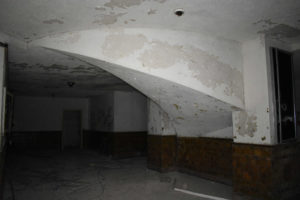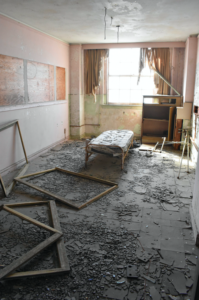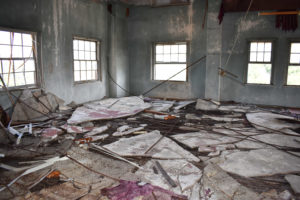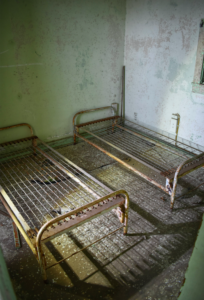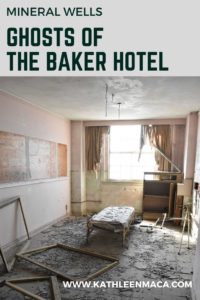Tag: folklore
Does Bigfoot Hang Out in East Texas?
For my 11th birthday, my parents took a group of my friends and I to see a new movie: “The Legend of Boggy Creek- A True Story.”
If you need a good giggle, click here to see the original movie trailer.
It was a new scary movie (called a docu-drama) about a monster that lived in the swamps of Arkansas. (I know, I know…”swamps in Arkansas?”) Basically portrayed as a Bigfoot-like creature, this guy attacked and killed people. I remember not being very scared (even back then it took quite a bit to scare me), but my friends screamed and clutched each other through the entire thing. I don’t remember if I noticed that it was painfully obvious that this “Bigfoot” was a guy in an ape suit, complete with cutout eyes.
But as bad as it was, the movie holds a fun spot in my memories because, hey…it was my birthday.
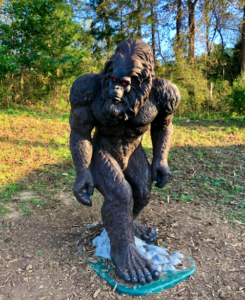 Just a few months ago I was speaking at a paranormal convention in Jefferson (about Victorian funeral customs). One of the gentlemen who had a booth in the vendor hall carried just about everything Bigfoot-themed you could think of: dolls, bumper stickers, books, key chains and more. I resisted as long as I could, but I finally politely asked him what connection Bigfoot had with East Texas.
Just a few months ago I was speaking at a paranormal convention in Jefferson (about Victorian funeral customs). One of the gentlemen who had a booth in the vendor hall carried just about everything Bigfoot-themed you could think of: dolls, bumper stickers, books, key chains and more. I resisted as long as I could, but I finally politely asked him what connection Bigfoot had with East Texas.
He looked at me as if I had lost my mind, and then asked if I had ever heard of a movie called “Legend of Boggy Creek.”
I smiled and replied that, well yes as a matter of fact I remembered that movie.
That’s when he told me that although the movie was set in Arkansas, those events actually happened in East Texas, where Bigfoot has been seen for years.
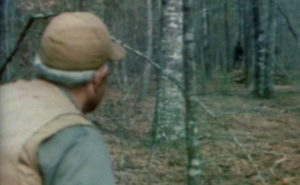 A couple of other attendees gathered to tell me that OF COURSE it was about East Texas, and the movie had even been filmed there.
A couple of other attendees gathered to tell me that OF COURSE it was about East Texas, and the movie had even been filmed there.
Well, huh. Who knew?
I thanked them for the information, and sat myself down for a visit with Mr. Google. But all I really had to do was walk across the street from the convention area to see a bronze statue of Bigfoot.
The next day, I drove to Uncertain, which is appropriately named for anything spooky, and recognized the same type of swampy, cypress-filled waterways and run-down wooden shacks that appeared in the movie.
I didn’t get to meet Bigfoot, but maybe he rests during the day. Wherever he was, I found Uncertain to be a magical place, and can’t wait to visit again to go kayaking or on an airboat ride. It’s an ecological wonderland. But I’ll have to remember to keep an eye out for the Big Guy in the treeline.
Who wants to join me?
A Ghostly Light on Bailey’s Prairie
A state as big as Texas is bound to have a lot of ghost stories. . . luckily for us!
The first tale I’ll share this October is probably one of the most famous to native Texans, and takes place in Bailey’s Prairie.
If you happen to be motoring south on Highway 35 and see a bouncing orange glow . . . it’s probably Old Brit Bailey in search of his jug of whiskey!
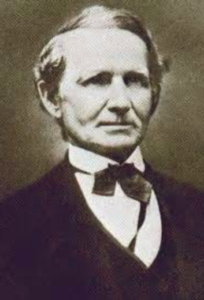 James Briton “Brit” Bailey was more than a real person. He was a real character. Known for his eccentric personality, love of drink and penchant for brawls, life was never dull in his presence. At six feet tall (quite a height for the time), was an imposing figure with his jet-black hair and broad brimmed hat.
James Briton “Brit” Bailey was more than a real person. He was a real character. Known for his eccentric personality, love of drink and penchant for brawls, life was never dull in his presence. At six feet tall (quite a height for the time), was an imposing figure with his jet-black hair and broad brimmed hat.
“Brit” was born in North Carolina on August 1, 1779 in North Carolina. After fighting in the War of 1812 the pioneer came to Texas in 1818 with his second wife, Dot, six children and his slaves, settling in what came to be known as Brazoria County. Several years later Stephen F. Austin would arrive with the “Old Three Hundred” to settle parcels of land in the area.
Not one to pass up a fight or give ground on a cause he believed in, Brit was also a veteran of the Battle of Jones Creek in 1824, and the Battle of Velasco in 1832.
Locals love to share a story about the rowdy rancher that captures his personality. It seems that he shot at a traveling preacher’s feet to watch him dance. After the episode when the men were sharing a drink, the preacher took the opportunity to grab Brit’s gun and m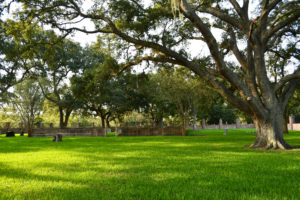 ade the same demand. Roaring with delight, Brit jumped onto a table and energetically danced a jig while onlookers applauded.
ade the same demand. Roaring with delight, Brit jumped onto a table and energetically danced a jig while onlookers applauded.
His temper was as legendary as his humor, and one night he apparently set fire to all the buildings on his own property except the main house.
On December 6, 1832 Brit passed away quietly in his own bed from fever that many think may have been cholera.
Peculiar instructions in his will provided one more surprise for the community. He had requested to be buried standing up (now that took a deep hole!), facing west with his rifle over his shoulder, powder horn by his side, and a jug of whiskey.
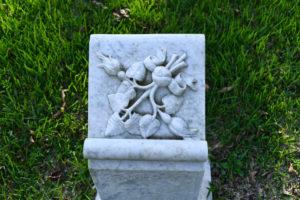 Brit didn’t want anyone passing by his grave saying, “There lies Brit Bailey” and he figured if her was standing up….they couldn’t!
Brit didn’t want anyone passing by his grave saying, “There lies Brit Bailey” and he figured if her was standing up….they couldn’t!
He was buried in a grove near his home and though all his instructions were followed, his jug whiskey was omitted from the coffin. His widow objected to that item, saying he had imbibed enough in his lifetime.
According to legend his ghost in the form of a strange light roams his old homestead at Bailey’s Prairie looking for the lost jug of whiskey. Many describe it as having an orange glow and bobbing around about four to six feet above the ground – the eight a lantern might be held on horseback.
Back when the story originated, it was said that Old Brit searched the prairie every seven years, but either people weren’t paying attention or he’s getting thirstier because now Bailey’s Light is seen on a regular basis.
Naysayers theorize the glow is caused by puffs of natural gas escaping from the ground, but you’ll be hard pressed to convince witnesses of that.
Bailey’s Prairie, Brit Bailey Boulevard (FM 521) and even a local chapter of the DAR are named for this unique figure in Texas history.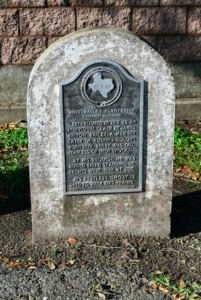
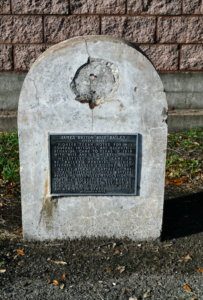
Texas State Historical Markers telling Brit’s story can be found just outside the gates of Munson Cemetery. Unfortunately, someone has vandalized the emblem off of Brit’s marker. (Hope that Brit chased them!)
Are you brave enough to search out Bailey’s Light on a dark night on the prairie?
Subject a real person: Confirmed
Location: Bailey’s Prairie, Brazoria County. Stretch of Highway 35 between Angleton and West Columbia
Best time to see phenomenon: Twilight
For more Texas ghost stories check out
“Ghosts of Galveston,”
available on amazon.com.
Virtual Travel: Waxahachie, Texas
This week we had a quick visit and virtual tour of the English Merchant’s Inn in Waxahachie . . . one of my favorite bed and breakfasts in Texas. If you missed it, you can catch the replay below, then refer to the links below for more fun to be found in this gem of a small town.
Click these links to find more information and photos:
English Merchant’s Inn
Waxahachie Courthouse Folklore
Hachie Hearts
Waxahachie’s Love Lock Bridge
Face It…Ellis County Courthouse Has Quite a Story!
Stone emojis? Well, kind of! These faces silently tell the story of an unrequited love in Ellis County long ago.
The courthouse itself is exquisite. This 1897 Romanesque Revival stunner was designed by architect J. Riely Gordon. If you’re a fan of Texas courthouses, you’ve heard his name before, since he designed 18 of them! But this one is undisputedly his masterpiece.
I promise to tell you more about this beauty another time, but for now we’re just going to talk about those faces! If you feel as if someone is watching you as your walk around the grounds of the courthouse square, you’re probably right.
MABEL’S FABLE
The story goes that sculptor Harry Herley arrived in Waxahachie in 1895 to work on carvings for the courthouse project during it’s construction. The itinerant English artist moved into Mama Frame’s boarding house, where he met and fell in love with her beautiful 16-year-old daughter Mabel.
As his work continued on the courthouse, Harry’s love for Mabel grew, and he carved her angelic countenance to top the exterior columns of the courthouse.
But, as fate would have it, the love was unrequite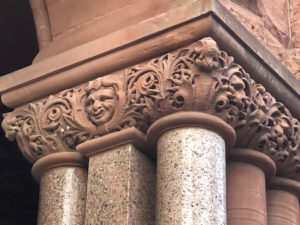 d and Mabel discouraged his constant attentions. As it became apparent to Harry that his love wasn’t returned, his disappointment slowly turned into bitterness, and the faces he carved to represent Mabel progressed from beautiful to grotesque and twisted. A lasting revenge for his broken heart.
d and Mabel discouraged his constant attentions. As it became apparent to Harry that his love wasn’t returned, his disappointment slowly turned into bitterness, and the faces he carved to represent Mabel progressed from beautiful to grotesque and twisted. A lasting revenge for his broken heart.
The townspeople weren’t too happy about the unattractive faces on the courthouse they had spend so much money to build, and one story relates that the cattlemen and farmers even tarred and feathered poor ol’ Harry and ran him out of town on a rail.
It’s a sad, but terrific tale ripe for retelling through the generations.
Spoiler alert: If you’re charmed by the legend and would prefer
to leave it at that . . .you might want to stop reading this now.
THE TRUTH
Mabel’s mother Hattie, although a widow, didn’t seem to be running a boarding house according to the federal census. Even if she had been, the chances are that Herley never met the Frame family.
The biggest obstacle to this story were the characters were when it was supposedly taking place.
The stone sculptures for the courthouse were sub-contracted to the Dallas firm of German stonemason Theodore Beilharz. Hervey, who worked for the company at the time, is created with carving the exquisite red sandstone capitals perched atop the polished pink granite columns, but he also supervised other carvers who worked on the project.
The carvings would have been created in the Beilharz’s Pacific and Hawkins Stoneyard in Dallas and shipped to Waxahachie by rail as finished pieces, ready to mount in place.
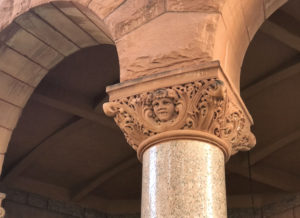 So…if Hervey wasn’t actually in Waxahachie, he certainly wasn’t occupied falling in love with one of its residents.
So…if Hervey wasn’t actually in Waxahachie, he certainly wasn’t occupied falling in love with one of its residents.
There’s no record of Hervey coming to town until the summer of 1896, a year after his work for the courthouse was completed, to work on another stone carving assignment for a prominent businessman.
It was on this trip that he met local girl Minnie Hodges, whom he married in August of that year.
Many of Reilly’s courthouses feature faces and gargoyles, appropriate for the Romanesque style, and its likely that the design or at least the theme for the faces was under his direction. Unfortunately no records show what the intended meaning of the progression was meant to represent…which opens them up to storytelling.
It’s still a good story, and I bet if we checked back in a hundred years..it will still be told.
Most local lore has elements of truth woven into it. Does knowing the true stories “ruin it” for you, or make it more interesting?
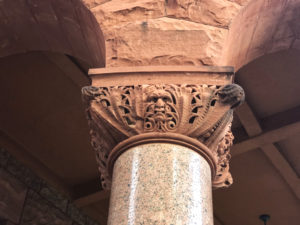
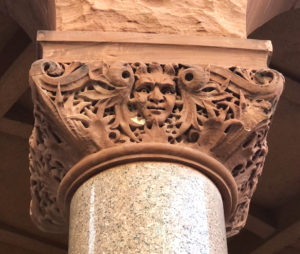
And what’s a Texas legend without a song to go along with it? To listen to Jeremiah Richey’s ditty about the Eliis County Courthouse faces, click here.
What’s the Deal with Decatur’s Dice?
Why the big dice in Decatur? Well, since you asked . . .

If you want to start a friendly debate in Decatur, Texas just ask a group of people about the origin of the phrase “Eighter from Decatur.”
The slang phrase is used by craps shooters who want to roll an eight, and it’s also the title of a song by Western swing legend Bob Wills.
The legend traces back to 1900 when a group of Home Guards and Army Regulars traveled by train to Virginia to participate in a reenactment of the Battle of Manassas.
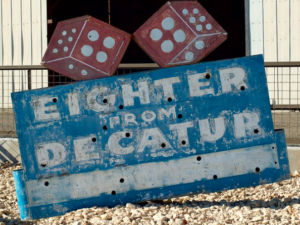 Will Cooper, had been hired as a cook for the Decatur participants, participated in a game of craps during the train ride. As a lucky phrase when he wanted to roll a ‘hard eight,’ Will would either say “Ada from Decautur” (supposedly referencing his sweetheart’s name) or “Eighter from Decatur” (which would have been more literally what he was hoping to roll.” Once the men reach the site of the reenactment and joined with others from around the country the craps games continued and Will’s catchphrase spread like wild fire. Supposedly it was taken back to all parts of the country and spoken by people in the following years who had no idea where Decatur was.
Will Cooper, had been hired as a cook for the Decatur participants, participated in a game of craps during the train ride. As a lucky phrase when he wanted to roll a ‘hard eight,’ Will would either say “Ada from Decautur” (supposedly referencing his sweetheart’s name) or “Eighter from Decatur” (which would have been more literally what he was hoping to roll.” Once the men reach the site of the reenactment and joined with others from around the country the craps games continued and Will’s catchphrase spread like wild fire. Supposedly it was taken back to all parts of the country and spoken by people in the following years who had no idea where Decatur was.
Soon after the phrase caught on, it was incorporated in local signs, businesses and even became the name of the local Navy Band, seen here posing in front of the local courthouse.

Whichever way the phrase rolls off your tongue, you’ll want to keep a sharp eye out in the small Texas town for dice in logos, signs, and sculptures.
Ghostly Residents of the Baker Hotel
It’s impossible to roam the halls of Mineral Wells’ 14-story Baker Hotel without uttering the stories of its hauntings. And while I look forward to sharing more about the history and state of the hotel itself in my next post, Halloween calls and insists that we revisit their stories once more.
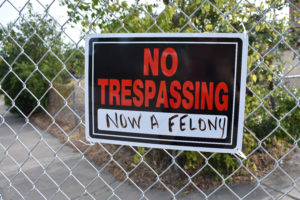 Now closed to the public the once luxurious Baker was one of the most popular resort destinations of its day.
Now closed to the public the once luxurious Baker was one of the most popular resort destinations of its day.
Now the graffiti covered walls with their flaking paint and the crumbling walls and ceilings create what seems to be the ideal home for the numerous phantoms that are said to roam the premises.
Climb the front stairs, turn on your flashlight and join me for a visit with the Baker Hotel ghosts.
ELEVATOR ANTICS
15-year-old Douglas Moore earned a job as a passenger elevator operator at the grand hotel two years after his family moved to Mineral Wells.
On January 16, 1948 Douglas arrived early for work and went to the basement to catch up with his friends working maintenance shifts. Teenage talk turned to horseplay and Douglas began to play with the service elevator at the base of the stairs, jumping in and out when it was in motion.
Mind you, this was in the days before safety features would keep doors from closing entirely if something (or one) was in the way.
You see where this is going…and it can’t be good.
One of his friends notice that Douglas hadn’t jumped quite far enough to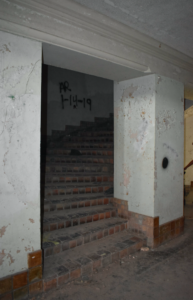 get his body totally inside the elevator compartment on one attempt, and pulled the young man’s legs to try to get him out. Tragically, he wasn’t quite fast enough and Douglas was caught between the doors and floor of the rising elevator, crushing him at the abdomen.
get his body totally inside the elevator compartment on one attempt, and pulled the young man’s legs to try to get him out. Tragically, he wasn’t quite fast enough and Douglas was caught between the doors and floor of the rising elevator, crushing him at the abdomen.
Even more gruesome, it was half an hour before help could dislodge him and get him to the hospital, where he died of his injuries.
As if his fate wasn’t horrific enough, lore states that he had actually been cut in half and that apparition of merely the top half of the unfortunate teen has been seen throughout the basement. According to his death certificate was an exaggeration of his fatal injuries, however.
Visitors have said that those who call the young man’s name aloud will feel a cold rush of air push by them…but it’s best not to tempt him while standing too close to the elevator shaft. The teen might just be lonely for a bit of company after all these years.
In an odd coincidence, his only brother Thomas was also killed as a teenager in a horrific accident while at his job in Mineral Wells.
BAKER, BUT WHICH ONE?
Earl Maynard Baker, nephew of the hotel’s found Theodore B. Baker, managed the Baker Hotel for over 40 years and lived in its Presidential Suite. After a string of contentious years with his family, spouse and even the community, Baker had a heart attack in his suite and subsequently died in the local hospital.
Reports say that he (or perhaps his uncle, the original resident) endlessly paces the rooms, now only a shadow of their former elegance. When the hotel was available to guides of ghost tours it was customary to knock before entering the suite as a form or respect…or perhaps to avoid his fiery temper.
Visitors to the area have claimed to smell cigar smoke, and to have small items from their purses or pockets come up missing…only to be found on the premises by tour guides later.
Whichever Baker may remain, he certainly has a sense of humor!
THE MISTRESS
The most famous spectral resident of the Baker is the lovely apparition of a ghost with red hair and green eyes. A porter of the hotel first saw her in the 1960s.
Known as the “Lady in White” she is believed to be the former manager’s mistress Virginia Brown, she flirts with men whom she finds attractive and resents the intrusion of other women in her suite at the southeast corner of the 7th floor.
Apparently t he woman, distraught from the affair, committed suicide by jumping to her death from the window of her room (or the roof, depending on which version of the tale is told).
he woman, distraught from the affair, committed suicide by jumping to her death from the window of her room (or the roof, depending on which version of the tale is told).
Her distinctive lavender perfume wafts throughout the floor; a red lipstick was even found by a maid on the rim of a glass when no one was staying in the suite.
The most restless spirit in the hotel, she refuses to be confined to one floor as she was in life, and the clicking of her high heels can be heard on the lobby floor.
I couldn’t find a Virginia Brown that would fit her age range and profile living in Mineral Wells at the time, though there were three others with the same name.
Whatever the name of the permanent guest, she is not to be taken lightly.
HIGH DIVE DURING COCKTAILS
The parties held in the Cloud Ballroom on the 12th floor were legendary, and guests often enjoyed themselves to excess.
One intoxicated woman actually tried to jump from the ballroom balcony into the pool below and naturally died in the attempt. Versions of the story say that she may have been racing her boyfriend who fled down the stairs to the pool deck and others that perhaps she may have received an unfriendly push.
Now she paces along the balcony considering her fate.
The Cook and the Maid
One of the persistent tales linked with the Baker is that of a hotel cook who was having an affair with one of the chambermaids. The legend states that the hotel’s cook was having an affair with one of the maids. The story goes that the woman threatened to expose their relationship to the cook’s wife, causing him to fly into a fit of rage and stab her to death in the kitchen pantry.
It’s said that female visitors have reported hearing a woman’s voice telling them to leave when they entered the kitchen.
Not surprisingly there doesn’t seem to be any evidence to support that such a murder too place – though the hotel’s food was reputed to be “to die for.”
LITTLE BOY
Considering the fact that many visitors to Mineral Wells came in search of thee curative properties the local spring waters were said to possess, it shouldn’t come as any surprise that not all cures were successful.
The spirit of a little boy about six-years-old plays in the hallways of the hotel, accompanied by his large, shaggy dog companion. A visiting medium claims that the boy communicated to her that he passed away in 1933, when his parents brought him there seeking treatment for his leukemia. He tends to be watched over by the spirit of an older woman who remains nearby, and try to gain visitors attention by bouncing his rubber ball.
OTHER DEATHS
Any hotel that has had some many people pass through its doors has seen its share of tragedies, and the Baker is no exception.
In 1944, a federal civil investigator – probably assigned to Camp Wolters- threw himself out of a window from Room 919. The FBI is said to have investigated, but no foul play was found.
In 1952, a man rented a room, went upstairs and cut his throat.
In the 1940s one man murdered another man in the lobby, reputedly over a private parking space. The murderer was found guilty, but released…enough of a reason for any victim to roam in anger.
Stories have also circulated about a spooky, secret network of tunnels beneath the hotel. There is one known passageway that leads from the hotel the pool on the property, and it’s possible that originally extended northeast to the original water tower (now a parking lot for a Methodist church). No other tunnels have been discovered but just the possibility can cause a shiver.
Although it doesn’t have stories of specific haunting attached to it, the hotel spa on the second floor is unarguably one of the creepiest areas on the property. It’s difficult to say whether that feeling is due to the archaic equipment crumbling in place or the general atmosphere.
The “Brazos Room”
When a group of World War II veterans and their spouses toured the hotel, multiple people in the group heard voices chatting, orchestra music playing and the sound of dinnerware and utensils being used. This occurrence seemingly had not happened before or since that day. Maybe their recognized their contemporaries?
With the Baker Hotel now receiving long overdue renovations and restoration, the ghosts of the famous inn will hopefully have plenty of living company very soon.
Which floor would you choose to stay on?
Haunted Texas Hotels
This time of year, Texas travel can take on a spookier theme when tourists seek out the most haunted hotels in their area.
 Our state has no shortage of hotels with stories of resident spirits and unnatural occurrences. Some are based in fact. Some are more of a “reach.” If you want to test your nerves by staying at a property that might be home to unearthly beings, here are a few to try:
Our state has no shortage of hotels with stories of resident spirits and unnatural occurrences. Some are based in fact. Some are more of a “reach.” If you want to test your nerves by staying at a property that might be home to unearthly beings, here are a few to try:
-
The Hotel Galvez, Galveston
-
The Driskill Hotel, Austin
-
Sheraton Gunter Hotel, San Antonio
-
Menger Hotel, San Antonio
-
Tremont House, Galveston
-
Nutt House, Granbury
-
The Excelsior Hotel, Jefferson
-
Jefferson Hotel, Jefferson
-
Baker Hotel, Mineral Wells
-
The Ott Hotel, Liberty
-
Renaissance Casa de las Palmas, McAllen
-
Gage Hotel, Marathon
-
Le Meridien Stoneleigh, Dallas
-
Queen Isabel Inn, Port Isabel
Of course, this list is far from complete, but it’s a good place to start.
If you’re planning to brave a potentially haunted hotel in hope of having your own other-worldly experience you may need to make your reservations pretty far ahead of your stay.
Read the stories about the resident spirit(s) and experiences of others. If there is a particular room in the hotel that is purported to be the center of the activity and you want to stay in it (like room 501 at The Hotel Galvez), plan to book your room MONTHS in advance. These rooms are incredibly popular! If you’re thinking about staying there in October, you may need to book even further out.
Don’t trust your own senses, but don’t have expensive “ghost hunting” electronics? No problem. Just download one of the many apps available that claim to detect the presence of spirits…but if the information they give you creeps you out, don’t blame me!
A few to check out:
-
Ghost Radar: Classic by Spud Pickles
-
Ghost Communicator by Andrew Gronek
-
Ghost Detector Free by Purple Penguin.com
-
Ghost Locator by Sebastien Mougey
-
Ghost Observer by AKEV
-
Ghost Recorder by MEDL Mobile, Inc.
-
Ghost O Meter by Adrian 3
But remember, if all of this ghostly talk isn’t your style, there’s no shame in checking into a brand new hotel, cuing up “Hocus Pocus” on pay-per-view and digging into some Halloween candy instead!
The Floating Coffin
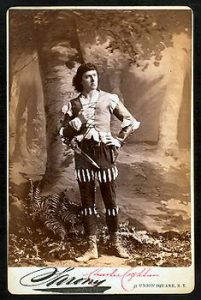 Among the most famous and tantalizing stories to come from the “Ripley’s Believe It or Not” franchise is one that begins with a death at the Tremont House Hotel in Galveston.
Among the most famous and tantalizing stories to come from the “Ripley’s Believe It or Not” franchise is one that begins with a death at the Tremont House Hotel in Galveston.
An Omen
The curious tale began when a young actor named Charles Francis Coghlan visited a gypsy fortuneteller. The mystical soothsayer told Coghlan that he would die at the height of his fame in a southern U. S. city – but that he would have no rest until he returned home.
 The prediction tormented Coghlan, disturbing him so much that he repeated it to friends and co-workers numberous times in the course of his life.
The prediction tormented Coghlan, disturbing him so much that he repeated it to friends and co-workers numberous times in the course of his life.
Over the next thirty years, Coghlan became one of the most famous actors of his day, appearing on stages across the U.S. and Europe. During the rare weeks that he did not appear on the stage, he and his wife retreated to their beloved home on Canada’s Prince Edward Island.
Fate Enters
On October 30, 1899, Coghlan arrived in Galveston with his performing troupe, ready to present one of his own works,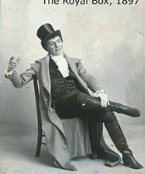 titled “The Royal Box.”
titled “The Royal Box.”
He never had the chance to appear on stage on the island, however. He became seriously ill with what doctors at the time diagnosed as acute gastritis. His understudy, Mr. Robinson, received wonderful reviews often mistakenly credited to Coghlan in print.
The actor’s wife remained with him, transcribing the first four acts of a new play, which he dictated while resting for four weeks. But, after an abrupt relapse of pain, he died in bed at the Tremont Hotel on November 27, with his distraught wife by his side. He was 57 years old and at the peak of his career.
His body was taken to the Levy Brothers Funeral Home, while his wife attempted to make arrangements in a strange city far from family and friends.
The griev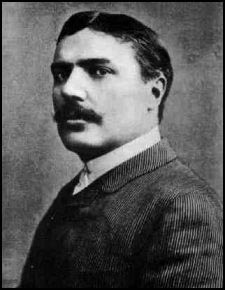 ing widow knew that her husband, upon his death, had wanted to be cremated and buried in New York. Galveston did not have a crematorium at the time, so she arranged for her husband’s body to be sh
ing widow knew that her husband, upon his death, had wanted to be cremated and buried in New York. Galveston did not have a crematorium at the time, so she arranged for her husband’s body to be sh
ipped to the nearest facility in St. Louis.
By the time those preparations were made, a flood of demands from family and admirers insisted he be taken immediately to New York. It is no wonder that confusion exists about the final arrangements for the disposition of the actor’s body. Unfortunately, the funeral home records from this time were destroyed in 1979.
Her funds and energy exhausted, Coughlan’s widow had his remains placed in a temporary receiving vault at the Lakeview Cemetery until she could manage to have him sent to New York the following year.
In September of the following year, the infamous 1900 Storm hit Galveston, killing thousands and sweeping coffins out of mausoleums and vaults. Though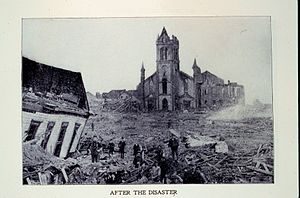 the vault where Coghlan’s body was constructed of heavy granite blocks, it was washed away like so many other structures on the island.
the vault where Coghlan’s body was constructed of heavy granite blocks, it was washed away like so many other structures on the island.
Those coffins that were recovered were reinterred in the cemetery, but many were never found. Coughlan’s casket, which was among the missing, had been caught in the swift-running current and believed to have been swept into the Gulf of Mexico. The New York Actor’s Club offered a sizable reward, but the casket was never located.
Because his widow had purchased an elaborate cast iron casket for her beloved, it is highly unlikely it could do anything but sink in a body of water.
Going Home
In 1929, an edition of “Ripley’s Believe It or Not” published a rumor that had developed in the years after the storm.
The original Ripley feature said: “Charles Coughlan comes home! He died in 1899, and he was buri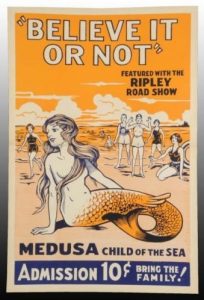 ed in Galveston. When the tragic flood came his coffin was washed out to sea and the Gulf Stream carried his around Florida and up the coast to Prince Edward Island – 2,000 miles distant – where he had lived.”
ed in Galveston. When the tragic flood came his coffin was washed out to sea and the Gulf Stream carried his around Florida and up the coast to Prince Edward Island – 2,000 miles distant – where he had lived.”
Ripley mentioned in October of 1908, fishermen spied a large box floating the Gulf of St. Lawrence. Snagging it with their nets, they pulled the badly damaged object to shore. A silver plate was revealed after cleaning off a few barnacles, which identified it as the casket of Charles Coughlan.
The legend tells that the actor was taken to his home church on Prince Edward Island and buried near the church where he was baptized in 1841. His wandering spirit was finally home.
Truth or Urban Myth?
Numerous books and articles have been written about the incident over the years, with slight to outrageous changes in the details. A brief internet search yields several versions of the story.
Local cemetery records of the small church on Prince Edward are considered to be complete and accurate. They show no sign of Charles Coughlan’s burial, and no gravestone exists.
It was reported that his daughter, actress Gertrude Coughlan Pitou visited Prince Edward in the 1980s and stated that her father’s remains had not been recovered or reinterred in Galveston. This report is seemingly eerie enough, since Gertrude herself died in 1952!
His sister, actress Rose Coughlan, was highly offended by the stories about her brother and she asked Robert Ripley for a retraction. Ripley, ever the savvy businessman, declined. He credited Sir Johnston Forbes Robertson, a Shakespearean actor and friend of Coughlan, for sharing the story with the publication.
The question remains: If Charles Coughlan is not at home at rest, and not in Lakeview Cemetery…where is he?

